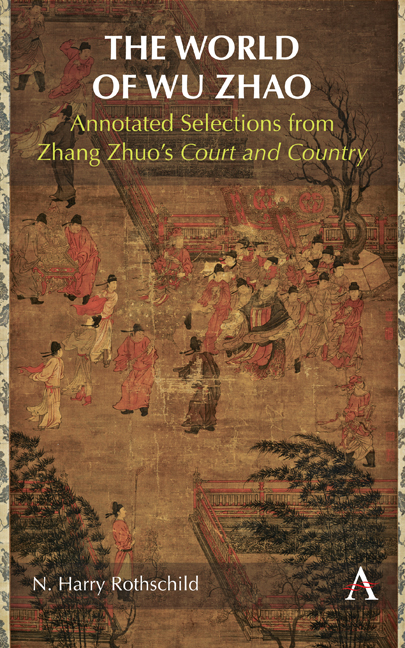Book contents
- Frontmatter
- Dedication
- Contents
- Acknowledgments
- Figures
- Map
- Tables
- Weights and Measures
- Introduction
- Chapter 1 Wu Zhao: her inner palace, her inner circle
- Chapter 2 The culture of the court
- Chapter 3 “Cruel officials”: Wu Zhao’s “teeth and horns”
- Chapter 4 Beyond court and capital: local officials
- Chapter 5 The common people
- Chapter 6 Relationships: men, women, and family in the time of Wu Zhao
- Chapter 7 Generals and military men
- Chapter 8 The frontier and beyond: foreigners and others during Wu Zhao’s reign
- Chapter 9 Religion and the supernatural world
- Chapter 10 Flora, fauna, and the natural world
- Afternote
- Appendix: People and Places
- Notes
- Bibliography
- Index
Chapter 8 - The frontier and beyond: foreigners and others during Wu Zhao’s reign
Published online by Cambridge University Press: 15 November 2023
- Frontmatter
- Dedication
- Contents
- Acknowledgments
- Figures
- Map
- Tables
- Weights and Measures
- Introduction
- Chapter 1 Wu Zhao: her inner palace, her inner circle
- Chapter 2 The culture of the court
- Chapter 3 “Cruel officials”: Wu Zhao’s “teeth and horns”
- Chapter 4 Beyond court and capital: local officials
- Chapter 5 The common people
- Chapter 6 Relationships: men, women, and family in the time of Wu Zhao
- Chapter 7 Generals and military men
- Chapter 8 The frontier and beyond: foreigners and others during Wu Zhao’s reign
- Chapter 9 Religion and the supernatural world
- Chapter 10 Flora, fauna, and the natural world
- Afternote
- Appendix: People and Places
- Notes
- Bibliography
- Index
Summary
IN THE SIMPLEST TERMS, A TRADITIONAL Chinese worldview contrasted a civil, agrarian interior with a barbaric, steppe/nomadic outside. Whatever the category, various binary oppositions—cooked versus raw foods, silken garments as opposed to coarse felt—functioned to construct the civility and refinement of the center in opposition to the progressive wildness and savagery of the periphery. In one of the earliest texts, The Book of History, there is a description of concentric circles radiating outward from the innermost nucleus of the “Imperial Domain” to the benighted far-off reaches, peopled with banished criminals and barbarians. The notion of the Four Barbarians (Siyi 四夷) representing the cardinal directions also originates in the Book of History. It is explicitly articulated in the Record of Rites (Li ji 禮記), where these so-called savages from different quadrants are labeled: “The Yi of the east, the Di of the north, the Rong of the west, and the Man of the south.” In theory, these barbarians paid tribute to the Chinese court and saw themselves as political and cultural inferiors. Robert Marks has remarked on the “heroic tinge” of the Chinese-Confucian narrative arc of history and literature in which the Chinese, as the “font of culture,” “spread the benefits of their high civilization to less advanced peoples, bringing them within the fold.” More often than not, stories about cultural Others in Zhang Zhuo’s Court and Country fit this paradigm.
To complicate matters of ethnicity, the imperial Li clan, the Tang rulers, were not Han Chinese; their lineage—though they claimed to belong to the aristocratic Longxi Lis and descend from the Daoist sage Laozi—can be traced to the Türkic Xianbei, a people connected to the steppe. This background created tensions between them and the “few dozen old Han clans” rooted in northern China who had for centuries “dominated high society and formed a quasi-aristocracy.” Though the ruling family had “barbarian” blood, it “made enormous efforts to present itself as a bona fide Han [Chinese] house.”
The early Tang featured a hybrid culture, blending Chinese and Central Asian elements. To cite one example, “barbarian dress” (hufu 胡服)—caftans, wide-brimmed veiled hats, shoes with upturned toes—and dances held an exotic appeal.
- Type
- Chapter
- Information
- The World of Wu ZhaoAnnotated Selections from Zhang Zhuo's <i>Court and Country</i>, pp. 151 - 170Publisher: Anthem PressPrint publication year: 2023

